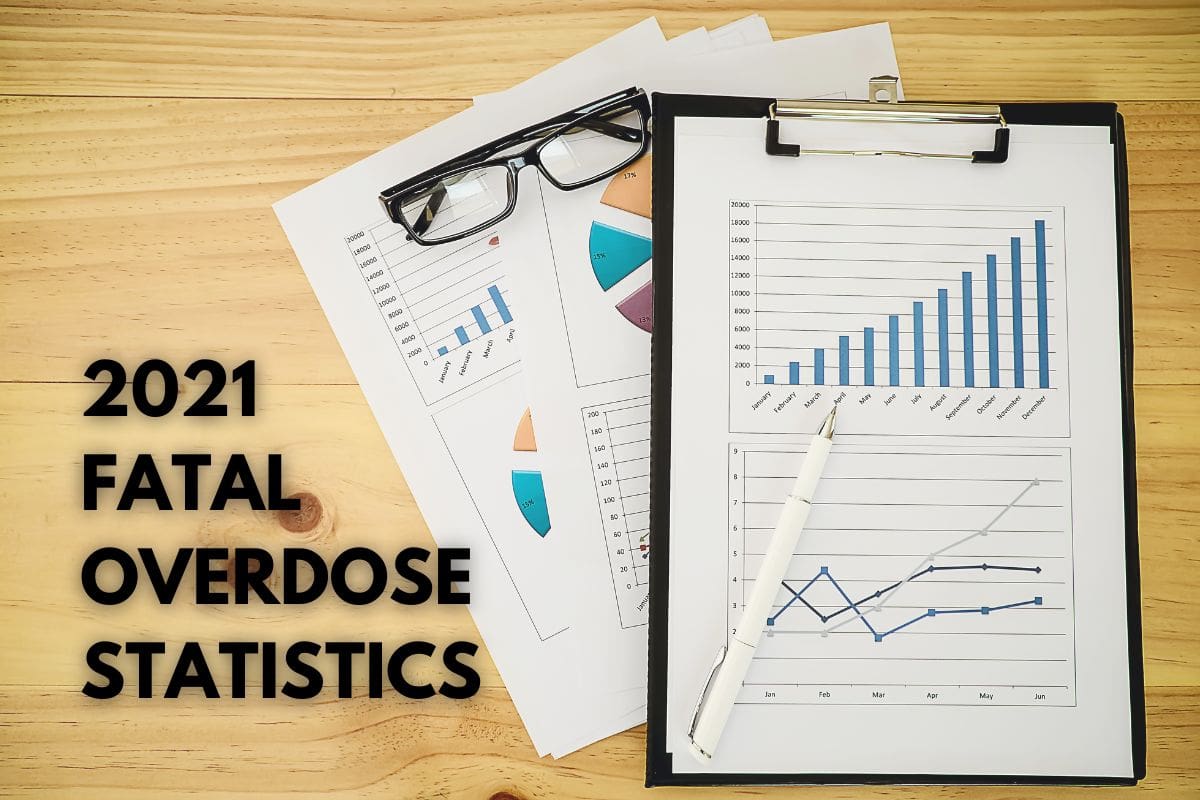By April 2021, the United States experienced an increase of 28.5% in overdose deaths compared to the same period the year before. New data shows that overdose deaths from synthetic opioids (mostly fentanyl) and methamphetamines also increased in the same period. Cocaine deaths and overdose deaths from natural and semi-synthetic prescription opioids also increased.
Drug overdose deaths have skyrocketed in the past years. From 2015 to 2021, overdose deaths increased by 99.4%. Since then, as of January 2022, drug overdose deaths have increased another 13%.
The increase in drug overdose deaths is alarming across the country. Experts believe the increasing prevalence of fentanyl to be a contributing factor. Nonetheless, psychostimulants, cocaine, and heroin overdose deaths have also continued to increase, particularly after 2020.
The COVID-19 Influence
As of November 2021, there were over 107,000 drug overdose deaths in the U.S., according to May 2022 data from the CDC. While drug-overdose deaths were already increasing, numbers suggest overdose deaths accelerated during the pandemic. During the pandemic, synthetic opioid deaths increased by 38.4%, cocaine deaths increased by 26.5%, and methamphetamine deaths increased by 34.8%. The 2021 increase (15%) was half of what it was a year ago when overdose deaths rose 30% from 2019 to 2020.
Opioids Aren’t the Only Problem. Meth Use Drives More Overdose Deaths in Rural America
While most of the country faced an opioid epidemic throughout 2021, rural America faced a meth problem. Roughly four in five people living in rural communities used methamphetamines. In addition, at least 14% of rural Americans had experienced a recent overdose, while 6% of those using only meth also experienced non-fatal overdoses.
While substance use disorders affect people of all walks, at least 53% of those dealing with meth addiction in rural America reported being homeless at some point in 2020-2021.
And, Over 30 States Saw Increased Drug Overdose Deaths
By the end of 2020, most states across the country saw an increase in drug overdose deaths. The most significant increase in overdose deaths in 2021 occurred in Alaska, where casualties were up 75.3%. The states with the highest growth include Mississippi (55.1%), West Virginia (54.2%), South Carolina (53.7%), Kentucky (51.4%), and Louisiana (50.9%). Only 12 states reported a decline or a stable number of drug overdose deaths: New Hampshire (-5.3%), South Dakota (-1.9%), Delaware (-1.5%), and New Jersey (1.3%).
However, Student Illicit Drug Use Declined
Surprisingly, in 2021, the number of US students reporting past-year illicit drug use declined across students from 8th grade to 12th grade. The most significant decline was seen in 10th-grade students, dropping 11.7% compared to 2020. Many believe the COVID-19 pandemic somewhat impacts students and their lives saw significant disruption and shifts in their day-to-day lives.
And Still, Drug Overdose Deaths Reached New Record
In 2021, more than 107,000 Americans died of a drug overdose. That translates to roughly one overdose death happening every 5 minutes. And also marks a 15% increase from the previous record set in 2020. Fentanyl overdose deaths surpassed 71,000; there was also a 23% increase in deaths involving cocaine and 34% in fatalities involving meth and other stimulants.
Yet, People Are Not Receiving Treatment
Of the 2.5 million people with opioid use disorder, only 11% received medication-assisted treatment. Mainly, people deal with restrictions like prior authorization or providers that don’t accept insurance for MAT services. And, despite the opioid epidemic, there are still too few providers that can prescribe treatment. The Substance Abuse and Mental Health Services Administration (SAMHSA) only lists 46,328 buprenorphine practitioner providers nationwide.
Moving Forward
Provisional statistics of drug overdose deaths for 2022 estimate at least 103,664 deaths as of April 2022, already a 4.7% increase compared to last year. Not only do we need further access to medication-assisted treatment and continue to expand coverage for addiction treatment without barriers, but federal legislation should also look at state and local harm-reduction programs to curb these numbers.
The United States has been fighting a drug overdose epidemic for the past decade and continues to struggle to support those fighting addictions.
If you or someone you know is dealing with a substance use disorder, please know there’s help available. Confide in your primary health care provider to find a referral. Or contact an addiction treatment center near you to learn more about their programs and options. Addiction doesn’t have to be a death sentence, and you don’t need to be part of a statistic. Find your road to recovery today.


































